Roof Heating Panels Transition and Z Metal Line Data Sheet
Download the Transition and Z Metal Data Sheet (PDF)
Download the Transition and Z Metal Data Sheet (PDF)
Download the Products and Services for Contractors Document (PDF)
Introduction
This article is intended as a general guide to help users of snowmelt systems that utilize the ETO2 and ground sensor. For more detailed information, please refer to the Owner’s and Installation Manual.
The ETO2 is an electronic controller for fully automatic, economical ice and snow melting for outdoor areas. The controller is used for snow melting and roof deicing systems utilizing in-ground sensors.
The ETOG in-ground sensor detects both temperature and moisture and signals the controller when conditions warrant. The ETO2 unit then sends power to the cable, activating the snowmelt system and warming the driveway surface.
The ETO2 features an easily operated encoder button and backlit graphic display to ensure quick and easy configuration and simple indication of temperature, status, etc.
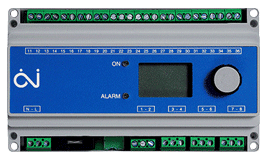
The control unit is suitable for controlling electric heating cables in a 1 or 2 zone system. It also features advanced two-stage output control for economic operation.
This article only covers some general startup and troubleshooting information for current owners. For installation instructions, please refer to the installation manual provided. (Available on our snowmelt product documentation web page.)
STARTUP
Turn the encoder knob on the front of the ETO2 to scroll through the available options.
Push the Encoder knob to “enter” your selection.
When the ETO2 is switched on for the first time, Celsius” or “Fahrenheit” must be selected. Turn the encoder knob until the required temperature scale is highlighted. Then OK the selection by depressing the encoder knob.
SENSOR 1 is shown on the display, allowing the type of sensor connected for input 1 to be selected. (ETOG ground sensor or ETOR gutter sensor and outdoor sensor.) OK the selection by depressing the encoder knob.
SENSOR 2 is then shown on the display, allowing the type of sensor connected for input 2 to be selected. If no sensor is connected for input 2, OFF must be selected.
OUTDOOR SENSOR: Select if outdoor sensor ETF is connected to terminals 31, 32. If no sensor ETF is connected, OFF must be selected. Press encoder knob for OK.
To select the application type, turn the encoder knob and then depress it.
ELECTRIC 1-ZONE:
ELECTRIC 2-ZONE:
ELECTRIC 2-STEP:
Select the appropriate option and press OK. The system is now set up, and will begin operating fully automatically, in accordance with the pre-configured standard program, see FACTORY SETTINGS. Alternative settings can also be made, see SETTINGS.
Status and afterheat data for zones 1 and 2 are now shown on the display.
OPERATION
The ETO2 is equipped with an easily operated encoder knob/button (turn and press) and a display which describes the current situation. The display is backlit and illuminated by pressing the encoder knob. The illumination is automatically switched off after 30 seconds.
Press the encoder knob and the Main Menu will be displayed. Turn the knob to scroll through the options. Not all the options are shown on the display at once, but they can be accessed by turning the encoder knob. Press OK to select a highlighted option.
SETTINGS
Please note that incorrect sensor setup may lead to poor or lacking ice and snow melting. Press OK and a submenu will be shown on the display. Select the parameter to be set and press OK.
SETUP
FORCE HEAT – OFF Manual start of forced heat. Press OK and select ON to start Forced heat. ETO2 controller will heat in the pre-programmed AFTERRUN time, see AFTERRUN 1 and 2.
SELECT SCALE C – Whether temperature is to be displayed in Celsius (C) or Fahrenheit (F) can be selected here. Select the required scale and press OK. Press OK to return to the SETUP menu.
RESTART
When changing the settings or require a new process start, the ETO2 can be restarted in this menu.
OFFSET CALIBRATION
Restart operation. Keeping your current settings. The ETO2 will go to the initial status display. If it is necessary to calibrate the temperature measured by the ETOG sensor, please follow the steps below:
NOTE: With ETOG-55 sensor, the temperature shown on the ETO2 display is always the core temperature of the sensor.
TROUBLESHOOTING
By errors in the snow melting system, it is recommendable to check the setup of the ETO2. Activate the menu by pressing the adjustment knob, press SHOW INFO and readout the programmed application. By errors in the setup, activate REINSTALL with factory code 1202.
Check that all connections are placed correctly, and that cables are fastened in the clamps. For more information, contact our technical support department 801.948.7545.
| PROBLEM | ACTION / POSSIBLE CAUSE |
| Display shows HEAT ON in zone 1 / 2 but the snow is not melting: | Wait 1-2 hours.
Check under the snow, if the snow is beginning to melt the system is OK. Check the heating cables for defects or bad connections. It is too cold for snow melting (power/m2) or undersized heating cables/ hydronic heating system. |
| Display does not show HEAT ON in zone 1 / 2 | The temperature is higher than SET TEMP. Adjust SET TEMP to higher temperature.
The snow around the ground sensor is melting/drifting snow has exposed the sensor. AFTERRUN time must be increased. Alternatively, FORCED HEAT can be activated. Igloo effect around the sensor. The ground sensor has melted an insulated hollow under the snow. Activate FORCED HEAT or, alternatively, set MOIST SENSOR to OFF. The temperature is lower than the OFF TEMP setting. Depending on dimensioning, the system has a lower temperature limit, at which the system can melt the snow. Try melting the snow with FORCE HEAT, before OFF TEMP is changed. |
| The heat does not shut off after ice/snow melting: | AFTERRUN time is too long – reduce AFTERRUN time and activate RESTART in the menu.
Moisture detection in the ETOG/ETOR sensor is turned off – set MOIST CTRL to ON in the menu. |
| If the ALARM button flashes red, one of the following errors has occurred. This can be displayed under the menu: ALARM. | |
| RETURN TEMP LOW | Water temperature on return pipe is too low. |
| SUPPLY TEMP HIGH | Water temperature on supply pipe is too high. |
| RETURN SENSOR | Return sensor defective. |
| SUPPLY SENSOR | Supply sensor defective. |
| TEMP SENSOR 1 | Temperature sensor in ground or roof sensor 1 defective. |
| TEMP SENSOR 2 | Temperature sensor in ground or roof sensor 1 defective. |
| OUTDOOR SENSOR | Outdoor sensor defective. |
| SENSOR HEATER | Short circuit of heating element in ground or roof sensor. |
| FROST PROTECT | Active frost protection due to low return temperature (water based systems only) |
Getting the Most out of Your Snowmelt System During Extreme Snow Events
Your Warmzone snow melting system was designed according to ASHRAE standards, meaning it was designed specifically for typical winter conditions in your area – and then some. But every now and then Mother Nature unleashes a furious “perfect storm” of epic proportions that overwhelm even the most hardy winter-weather cities. Snow plows, public transportation and basic city services can be brought to their knees because of unusually low temperatures and record breaking snowfall. Even fully automated radiant snow melting systems are faced with some unique challenges posed by the extreme conditions. Fortunately, Warmzone snowmelt systems include features that allow you to better cope with winter anomalies such as an extreme snow event.
Tips – Preparing for an Extreme Snow Event
If you’re faced with a potential storm of record magnitude, follow the steps outlined below.
Timer: If you purchased a timer with your heated driveway system, use this manual override feature to pre-heat your driveway 2-4 hours before the storm hits. (Once the snow starts to fall, the snow switch will detect precipitation and automatically activate the system.)
Aerial Mount Snow Switch: If you don’t have a timer, you can still manually activate the system using the WS-AUX controller or the aerial-mount snow switch. To activate the system using the snow switch, flip the toggle switch on the side of the unit up so that it is in the ON position. This activates the system and begins pre-heating the driveway. (NOTE: Remember that the system will remain on until you return the toggle switch to AUTOMATIC or STANDBY.)
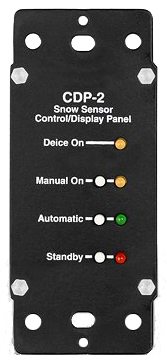
WS-AUX Controller: Activating the system using the WS-AUX controller is the most convenient method for pre-heating your driveway or walks. Turning the sensor override switch on the WS-AUX to the MANUAL ON position will activate the snowmelt system continuously. Pressing the MANUAL ON button on the WS-AUX will not trigger the sensor to run continuously but will initiate one “drying cycle.” This mode can be used to test the system or clear any remaining un-melted snow. This function allows the user to run a cycle without having to remember to turn the system back off. The sensor will initiate one drying cycle and revert to automatic mode, thereby making it ready for detection of the next storm. The MANUAL ON mode can be activated directly from either AUTOMATIC or STANDBY mode. The user may reset and clear the drying cycle by pressing STANDBY.
The WS-AUX will show the current setting of the manual override switch for the attached snow sensor. The sensor’s override switch will always take precedence over the WS-AUX setting. If, for example, the WS-AUX has placed the sensor into STANDBY mode and the sensor switch is moved to MANUAL ON, the WS-AUX will show a change to MANUAL ON mode. Whenever the sensor’s switch overrides the WS-AUX’s setting, then returns to AUTOMATIC mode, the WS-AUX will also revert to AUTOMATIC mode.
In-Ground Snow Switch: For those utilizing the pavement-mount snow switch, refer to page 6 and 9 of the ETO2 User’s Guide Programming Manual.
Pre-heat Your Driveways in Preparation for Record Snowfalls
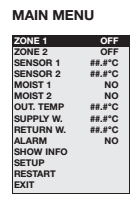
In MAIN MENU of the controller, turn the dial to scroll down to SETUP (as seen on page 6 of the User Manual). After selecting SETUP, scroll down to FORCE HEAT and push the dial in to select. This will then activate the system.
Naturally, you do not want to turn the snow melting system on too late or too early, so follow the local weather reports and make your best guess as to when the storm’s first snow will fall. It is recommended to begin pre-heating your driveway (or sidewalks) 2 to 4 hours before any excessively large storm hits. This gives your system a “head start” that will help it to keep up with the unusually heavy snowfall.
Remember, pre-heating the driveway is not necessary in most other cases. Your automated snow melting system was designed to effectively handle typical winter storms in your area. The steps outlined here are simply offered as suggestions to help you cope with the occasional record-breaking snow storm.
 The heat will stay on the amount of time the designated in the AFTERRUN mode. Once the FORCE HEAT cycle is complete, the device will default back to AUTOMATIC mode. The falling snow will then keep the system on.
The heat will stay on the amount of time the designated in the AFTERRUN mode. Once the FORCE HEAT cycle is complete, the device will default back to AUTOMATIC mode. The falling snow will then keep the system on.

Adjusting the AFTERRUNTo adjust the AFTERRUN, remain in the SETUP menu.
Refer to page 10 of the User’s Manual.
Set the time for how long before the snowfall that you want to pre-heat the driveway area. Typical time ranges between 2 and 4 hours, depending on the storm.)
Check out Warmzone’s helpful instructional videos on YouTube:
Video instructions on tuning your pavement mount controller
Video instructions for programming your WS-5C aerial-mount snow sensor
Remember, a snow melting system is only as good as it’s installation. So if you’re considering purchasing a radiant heat system, be sure to deal only with experienced professionals who legitimately offer a dedicated support team that will work with you and guide you through the installation process.
And when those record breaking storms come calling at your doorstep, be sure to get the most out of your ClearZone snow melting system by talking to the pros at Warmzone. If you have any questions, feel free to pick up the phone and call Warmzone for additional radiant heat information or to learn how to best deal with extreme snow events. Our business is built on customer service, and we take great pride in being responsive to our customers needs, so don’t hesitate to contact an experienced radiant heat professional at Warmzone today (888.488.9276).
Considering an electric radiant heated floor system for your home? Let Warmzone be your “go to” for solid solutions to your heating needs. Warmzone offers a wide variety of heating systems that are flexible enough to be installed under just about any type of surface.
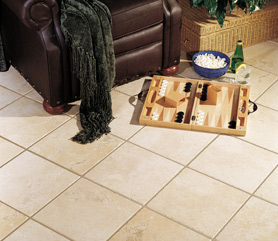
Basically there are two types of radiant heat—hydronic and electric, and certainly Warmzone can handle the installation of both. Electric radiant heat systems feature rapid response times, easy installation at a cost most homeowners are comfortable with. And it just so happens that Warmzone carries a full line of products perfect for a variety of electric radiant heated floor applications and a variety of surfaces:
ComfortTile cable is less than ¼ of an inch in thickness and is installed in thinset so there is no floor buildup. With a durable, stainless steel braid covering, the cable is perfect right off the spool for custom shaped flooring projects involving tile, marble and slate surfaces, among others. The cable also comes pre-configured in mats that are low-profile for ease of installation.
FilmHeat floor heating panels provide one of the best values for installing radiant heat under laminate and floating floors. The near paper-thin heating element is laid out directly under the floating floor without any need for adhesives, making it quick, easy, and affordable to install.
Warmzone FloorHeat is a low-voltage, self-regulating heating element that operates efficiently and enjoys a long life by design. The flexible heating element is thin, requires no floor buildup and can be easily secured to the subfloor with adhesive, staples or pegs. Panels can be cut to length on site and installed under most floor coverings, including tile, stone, resilient, laminate, hardwood and carpet, making for easy installation under a variety of surfaces.
And for those concerned about the invasive nature of radiant floor heat, there’s RetroHeat radiant heat elements that can be retrofitted to existing floors with minimal effort between floor joists to efficiently heat your floors. Heat panels are available for joists with 12, 16 and 24-inch spacing and can be cut on site, so they’re easy to work with for a contractor or do-it-yourselfer.
With so many choices there’s bound to be a solution from Warmzone to fit your budget and project requirements. Give them a call today to find out how Warmzone can help you find the perfect radiant heated flooring solution for you at 888.488.9276.
Warmzone offers several high quality heated driveway and radiant snow melting systems available for both commercial and residential applications. Among their most popular products you’ll find ClearZone cable, a trusted, popular snow and ice melting solution among homeowners and professional builders alike, and a great solution for snow removal during the cold winter months.
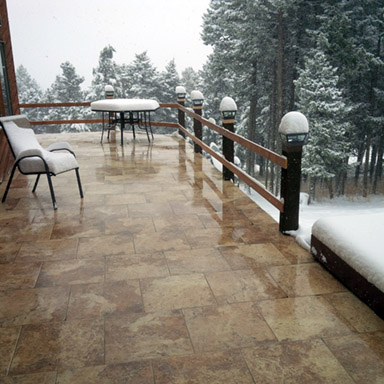
ClearZone electric snowmelt cable is incredibly energy efficient, fully automated, maintenance free and easy to install. Plus, it’s readily customizable to meet the needs of just about any project, including retrofitting existing driveways. That’s because ClearZone snow heat cable can be purchased on the spool in a form that’s durable, versatile and easily configured for use in a variety of applications. This trusted, popular snow melting solution allows for greater flexibility so it’s good for custom layouts, or for use in large snow melting jobs and unconventionally shaped areas.
If you’re a do-it-yourselfer or contractor with limited experience in radiant heat installation, it may be more beneficial to choose ClearZone Radiant Snow Melting Mats. They’re basically ClearZone heat cable pre-spaced in mats to create a convenient, versatile design. The heat cable is pre-spaced and attached to a durable backing for proper cable spacing and easy “roll-out” installation. The backing can be cut on site so mats can be installed around corners and odd layouts.
ClearZone cable is also designed for installation under a variety of applications, from new concrete pours to paver stones. Whether pre-configured or right off the spool, it can easily withstand the hot temperatures of new asphalt construction jobs and installation is easy. Asphalt is spread directly over the rugged ClearZone heat cable and then compacted. Embedded, fully automated ClearZone radiant heat snow melting provides a discreet, reliable snowmelt solution for your driveway or sidewalks.
For heated stone or brick paver driveways and sidewalks, the cable is laid out in the bedding material of the driveway or sidewalk to be heated before a bed of sand is applied. The pavers can then be directly placed over the new heat cable.
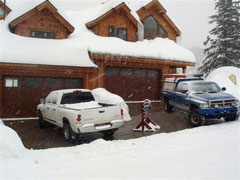
If you’re current plans don’t involve a new driveway, Warmzone has the expertise to retrofit a system for you inexpensively. ClearZone radiant heat cable can be easily laid over existing asphalt and secured using clips and nails, followed by a few shovels of new asphalt. The good news–the cable only requires a ½ inch of asphalt, a minimal amount (when you consider the cost of an entirely new driveway) to operate properly and provide quick, efficient, effective snow removal.
A ClearZone snow melting system can also be installed in existing driveways using saw-cut technology. Grooves are cut into the existing concrete or asphalt to allow for a proper retrofit. The cable is laid into the grooves and then sealed with an epoxy topcoat (for asphalt, an additional layer of asphalt is added).
To learn more about ClearZone snow melting cable, contact Warmzone at 888.488.9276 or go to www.warmzone.com.
When it comes to Roof Deicing and Gutter Trace Solutions, Remember this: Not all Roof Heating Cable is Created Equal.
Beware of Cheap Local Hardware Store Heat Cable.
If you’re currently shopping for a roof heating solution, don’t settle on one system too quickly. Before you buy, it really pays to give Warmzone a call. They offer a range of affordable, reliable products to suit your home and your budget; and access to a staff of knowledgeable, reliable professionals to help you make an affordable, informed decision you can live with.
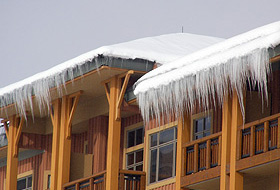
Why not buy heat cable at your local home improvement center? As with any home improvement project, you’ll find there are many options, including many “bargain” roof heating cables that can be easily purchased right off the shelf. Many of these cables are designed to only deliver minimum wattage, which means that they will not perform well in extremely cold temperatures. Warmzone offers a large selection of proven heat cable specifically designed for roof deicing applications that can easily handle any cold-weather job.
Cheaper cable can also suffer from deficits in performance due to poor construction. Consider the outer jacket or covering of a radiant heat cable. On a “typical” cable, this outer jacket tends to bubble or separate from the cable core when the cable is manipulated for turns during installation. These irregularities can create stress points on the cable, allowing water to reach the core, resulting in erratic heating and eventual cable failure.
Warmzone self-regulating heat cable has a higher quality outer jacket that helps to ensure the integrity of the cable. As a result, this flexible cable construction delivers a more consistent, reliable performance than a solution you might find at your typical hardware chain. Warmzone’s roof deicing and gutter trace cable is rated to perform in the worst weather conditions winter can bring.
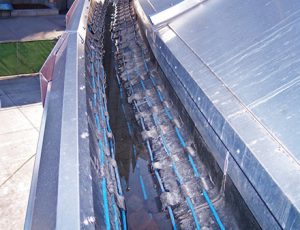
And if you’re thinking of installing the radiant heat system you just picked up from your local hardware today, you’ll most likely have to wait until the temperature warms up. That’s because the carbon in a “cheaper” cable becomes brittle and can easily break when bent or manipulated in colder temperatures. The good news—unlike “bargain” heat cable, the high quality carbon center and outer jacket of a Warmzone cable remains flexible at temperatures as low as 0 degrees Fahrenheit, so you don’t have to wait until spring to install it.
For long term, reliable performance, Warmzone’s self-regulating “R” cable sets the industry gold standard. RHSR-R is UL listed self-regulating heat cable that can be used for roof and gutter heating as well as pipe tracing applications. This proven cable features a flexible, UV-stabilized thermoplastic elastomer overjacket that protects the carbon core for wet applications and exposure to the sun. This cable is versatile enough for both plastic or metal pipe freeze protection, and temperature maintenance of tanks, pipes and valves, and is covered by a 10-year warranty.
Of course, the best way to save money on your gutter trace system is to purchase an affordable cable that will perform in extreme cold and last as long as your roof. For more information on quality roof deicing solutions, give Warmzone a call at 888.488.9276.
Keeping your roof clear of ice and snow buildup is critical to maintaining the integrity of your home, and Warmzone offers the perfect snow melting solution for the job. With a fully-automated Warmzone radiant heated roof, you won’t have to worry about costly ice and water damage, frost erosion or dangerous falling ice any longer.
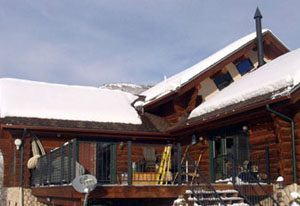
Unlike the bargain roof heating solutions you might find at your local hardware store, Warmzone radiant heated roof systems are rated for extremely cold weather and are fully-automated. They are controlled by automatic sensors designed to detect changes in temperature and precipitation. When conditions warrant, the sensor sends a signal to activate the heating element just as the storm starts, preventing snow from accumulating on your roof. There’s no switch to flip, no weather channel to monitor. With a Warmzone radiant roof heating system, you simply set it and forget it. No matter what the conditions, Warmzone RoofHeat systems will keep your roof, gutters and downspouts clear and dry.
If you’re concerned about the cost of heating your entire roof, no worries! Warmzone offers a wide selection of proven roof deicing systems that can be customized to meet your specific needs. Gutter trace systems, for example, are easily installed in existing gutters and downspouts to melt ice and snow, allowing it to freely flow down the roof and through the downspout and away from your home. Or choose a Warmzone RoofHeat panel system. They also rely on self-regulating heat cable which is channeled into an aluminum panel to quickly warm the edges of your roof and prevent snow from having any chance to build up. Another option, RoofHeat STEP low-voltage heating elements can be installed under the shingles, in roof valleys and problem areas of your roof where snow and ice have a tendency to build up. These low-voltage systems can also be safely installed under metal roofs.
Whatever your strategy, any snow melting solution for you roof is only as good as the cable behind it. Unlike typical “bargain” heat cable, Warmzone’s durable self-regulating heat cable is effective for roofs, gutters and drainpipes regardless of the conditions. Heat cable commonly found in large hardware stores is low-end cable that often tends to crack and break under cold conditions. But Warmzone’s heat cable is more durable under cold weather conditions. The self-regulating heat cable features a solid inner core surrounded by a rugged, durable outer jacket that reduces the chances of “bubbling” or pulling away from the core when the cable is manipulated, and is completely waterproof. The cable can be installed in cold or warm weather to protect your roof and home from ice dams and eliminate the costly results of water damage.
Remember, while those icicles may look pretty, they can be a sign of bigger problems. Make a smart investment in your home by installing a trusted roof heating system from Warmzone. Call today at 888.488.9276.